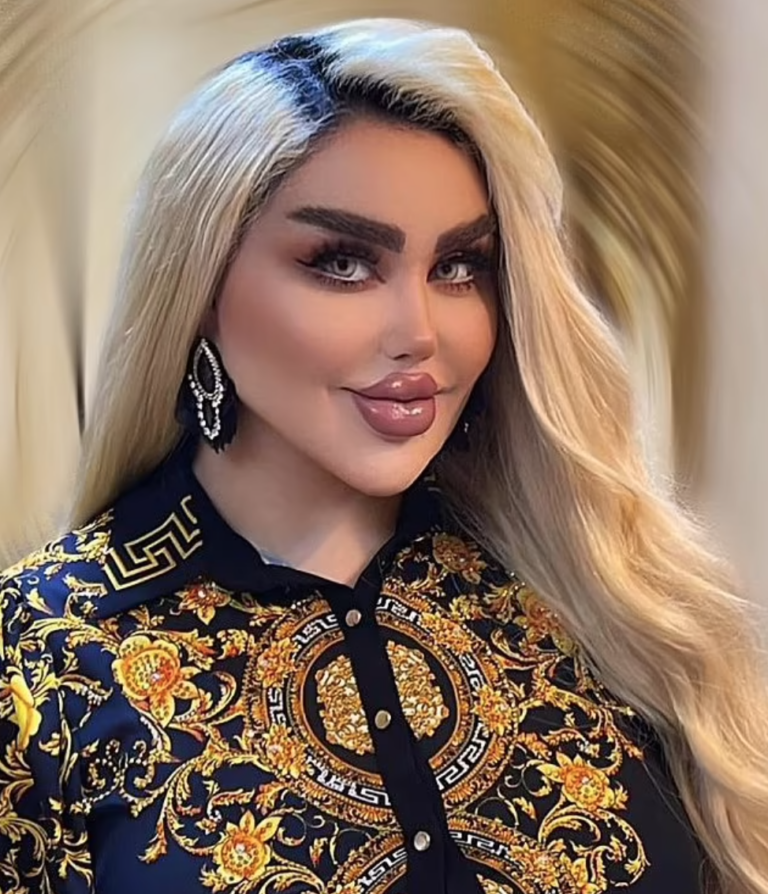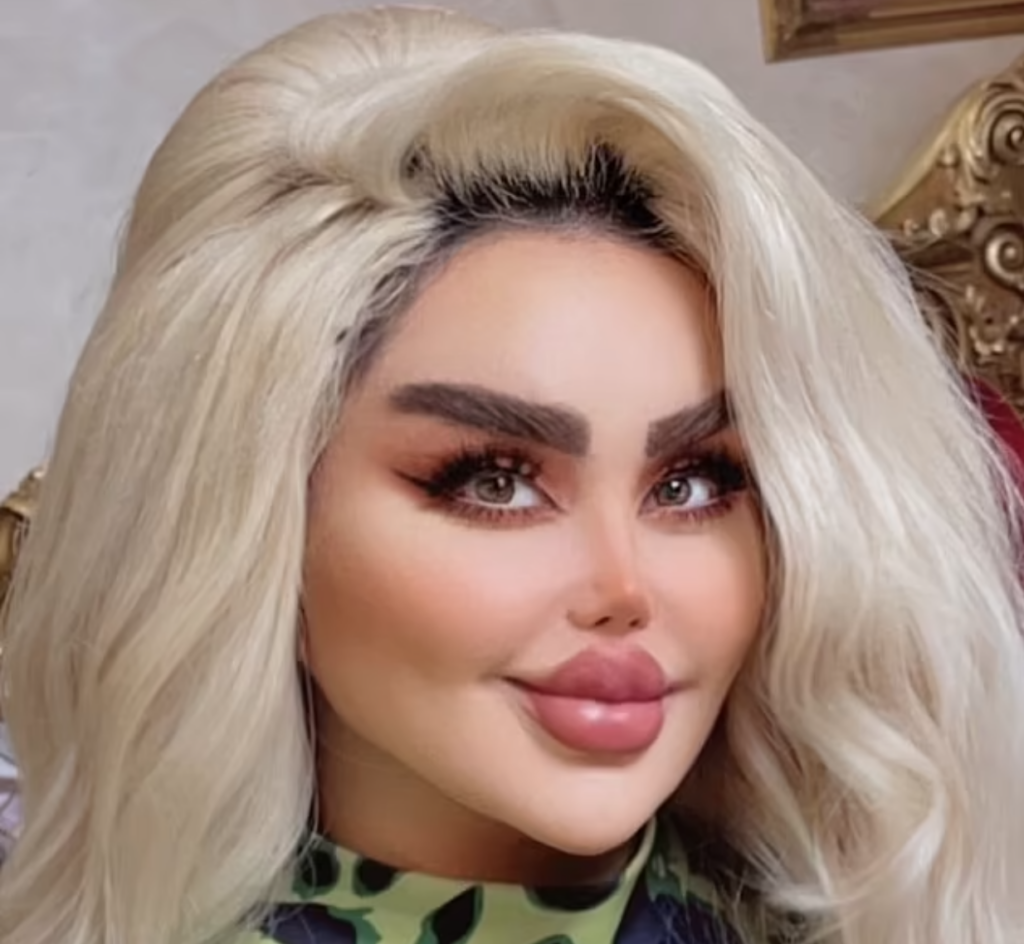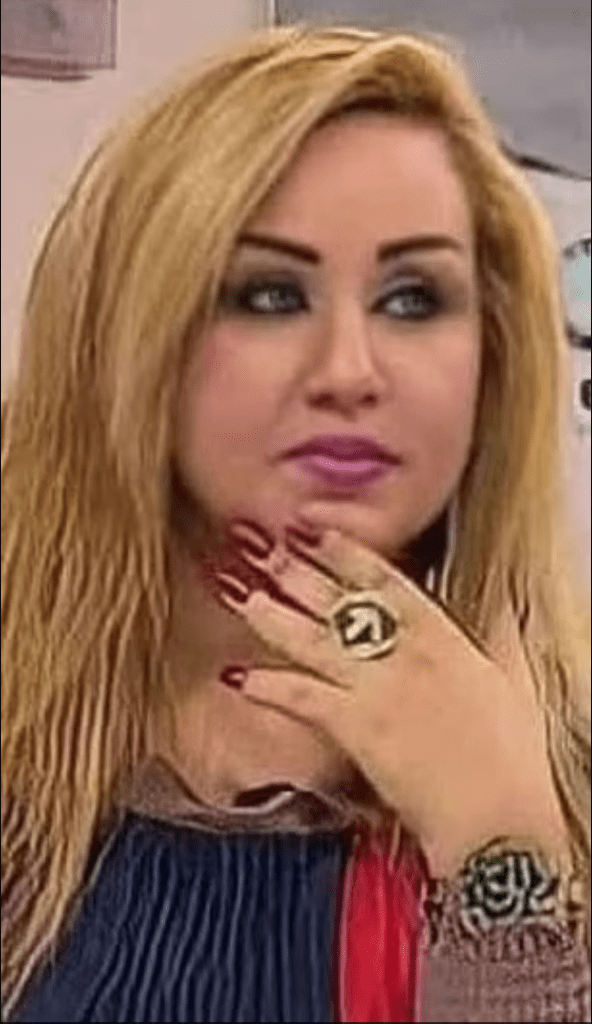Plastic surgery has long been a topic of fascination and controversy. From subtle enhancements to extreme makeovers, it captures the public’s imagination, and Dalia Naeem, a 29-year-old from Baghdad, has taken this to an extraordinary level. Her journey to transform into a living Barbie doll has sparked both admiration and criticism.
Who Is Dalia Naeem?

Dalia Naeem, also known as the “Iraqi Barbie,” is a TV host and actress from Baghdad. With her golden locks and exaggerated features, she’s made headlines for undergoing 43 cosmetic procedures. Her ambition? To emulate the iconic Barbie doll—a figure synonymous with beauty, glamour, and perfection.
But her transformation hasn’t been without controversy. While some laud her boldness and dedication, others have labeled her appearance as unnatural, even likening her to a “zombie” or “Devil Barbie.” Despite the mixed reactions, Dalia has amassed a considerable following on social media, boasting over 996,000 Instagram followers and 43,900 on TikTok.
The Cost of Becoming a Barbie Doll
Becoming a human Barbie isn’t cheap. Reports suggest Dalia has spent thousands of dollars on surgeries. Her cosmetic journey includes lip fillers, breast augmentation, and likely other procedures to sculpt her features into the doll-like proportions she desired.
Her dramatic transformation has made her a polarizing figure. While her admirers praise her commitment to achieving her dream appearance, critics argue that she’s taken things too far, calling her look unnatural and even unsettling.
Her Debut as the ‘Iraqi Barbie’
Recently, Dalia showcased her latest look in a video that quickly went viral. Standing next to her makeup artist, she was lavished with compliments. “You look so beautiful, my dear. Like Barbie,” her makeup artist gushed. Dalia, with her enhanced lips and petite nose, responded confidently: “Your makeup is Barbie.”
This interaction highlights how much of her identity is now intertwined with her transformation. It’s not just her surgeries that contribute to her Barbie persona—it’s also her makeup, styling, and overall aesthetic.
The Internet Reacts: Barbie or Zombie?
When Dalia’s video surfaced, it triggered a wave of reactions. Some commenters applauded her for achieving her unique look, while others were far less kind. Critics compared her appearance to that of a zombie, pointing out the eerie, almost artificial quality of her features.
The polarized responses raise an important question: Why does her transformation elicit such strong opinions? On one hand, it challenges traditional beauty standards, pushing the boundaries of self-expression. On the other hand, it confronts people with an extreme version of cosmetic surgery’s possibilities, which can be unsettling.
A Glimpse Into Her Life Before Surgery

Before her surgeries, Dalia looked drastically different. Photos of her pre-transformation reveal a naturally attractive young woman with softer, more conventional features. The contrast between her past and present selves is stark, leaving many to wonder what motivated her to undertake such a dramatic transformation.
For Dalia, the decision seems rooted in a desire to embody a certain ideal of beauty. Barbie, as a cultural icon, represents more than just physical perfection; she’s also a symbol of glamour, luxury, and attention—all things Dalia appears to embrace.
The Power and Pitfalls of Social Media Fame
Dalia’s transformation has undoubtedly bolstered her career and online presence. Her fans, drawn to her striking looks and bold personality, see her as a symbol of confidence and self-expression. Her detractors, however, argue that her appearance perpetuates unrealistic beauty standards and sends a dangerous message to her followers.

Social media plays a pivotal role in this dynamic. Platforms like Instagram and TikTok provide Dalia with a stage to share her journey, but they also expose her to relentless scrutiny. The same platforms that celebrate individuality can also amplify negativity, creating a double-edged sword for influencers like Dalia.
The Bigger Picture: Why Dalia’s Story Matters
Dalia Naeem’s transformation isn’t just a personal story—it’s a reflection of broader societal trends. Her journey shines a light on the growing normalization of cosmetic procedures, fueled in part by social media and celebrity culture. It also raises questions about the pressures women face to conform to unattainable beauty standards.
At its core, Dalia’s story is about choice. While some may disagree with her decisions, they are hers to make. Whether she’s a symbol of empowerment or a cautionary tale depends largely on one’s perspective.
Conclusion

Dalia Naeem’s quest to become a living Barbie doll is as fascinating as it is polarizing. Her 43 cosmetic procedures have transformed her into an undeniable spectacle—a blend of admiration, criticism, and curiosity. While some celebrate her as a fearless individual breaking barriers, others see her as a cautionary example of the extremes of cosmetic surgery.
At the end of the day, Dalia’s story is a testament to the power of self-expression. Whether you love it or hate it, you can’t deny one thing: she’s captured the world’s attention. And in today’s social media-driven age, that’s no small feat.


